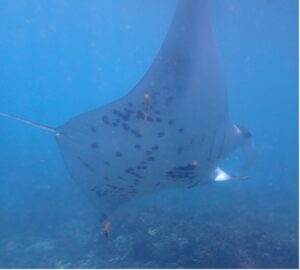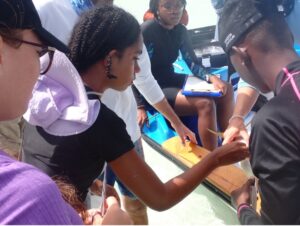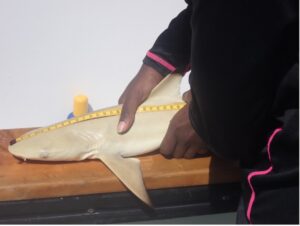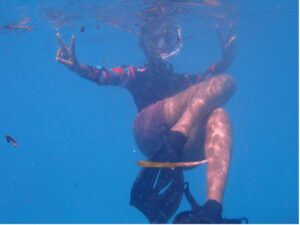A love letter to D’Arros
My name is Monik Choppy and I am 23 years old. In the past, I’ve felt the most fulfilled when participating in wildlife clubs and eco-school excursions. These childhood experiences only nurtured my curiosity about the natural world, and has lead me to study BSc Environmental Science at the University of Seychelles. Recently this course gave the cohort of 2022 the chance to embark on a field trip to D’Arros for six arduous yet thrilling days. This is an account of my experience, and so I start with this;
Dear D’Arros, here’s what I liked about you;
I liked that the sky was the clearest I’d ever seen, so clear that spotting shooting stars was just a normal occurrence. I liked that we got to experience the vast array of rich marine species inhabiting the island and its sister Atoll, St. Joseph. These included black tip reef sharks, mangrove rays, giant manta rays and more. We were also briefed on the research and long term monitoring that is carried out on D’Arros by the DCR team; Dyllis, Ellie, Henriette and Rob.
Day two started quite early as the first task was my favourite, surveying turtle tracks! From that experience I acquired a set of practical skills, and an eye for subtle details that indicate sea turtle behaviour. Being in nature at that peaceful hour in the morning was also calming and wholesome. Later that day, we also got to snorkel with Giant Manta rays, which was the highlight of most student’s time on D’Arros. How cool it was to learn that they can be identified by just the unique spot patterns on their belly.

Encounter with a reef manta ray cruising the shallow reefs of D’Arros. Photo by Monik Choppy | © Save Our Seas Foundation
Another thrilling experience was tagging juvenile sharks on the St Joseph atoll. I appreciated that the DCR team gave us the liberty of independently carrying out the tasks! It included measuring shark length, taking DNA samples and pit-tagging. This really gave me hands on experience, a sense of independence and a taste of what it’s like to work in a team. Learning how to use BRUVS also required heavy team-work, and it allowed us to observe marine species in their natural environment through underwater cameras! Other memorable moments of the field trip included going on night safaris with Sir Terrence Vel. We learned about space, stars, and the different terrestrial species of D’Arros.

Monik helping with the juvenile shark work-up in the St Joseph Atoll. Photo by Noah Dine | © Save Our Seas Foundation

Year 3 student Stephanie Gertrude holding a juvenile lemon shark for SOSF-DRC mark-recapture study. Photo by Nadisha Malbrook | © Save Our Seas Foundation
Our trip ended with an elevator pitch that each student had to present. It gave each student the chance to dive deep into a topic of their interest, and come up with innovative ways to study them. I liked how helpful the DCR team was, and how keen they were on sharing their knowledge. By the end of the trip, I felt like I had honed in on my practical field skills, became a more competent team ally, and a better critical thinker. The experience has surely ignited my passion for conservation and will forever help me in my career. For that D’Arros, all I can say is thank you.

